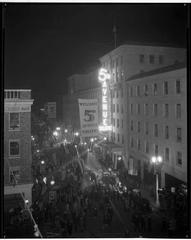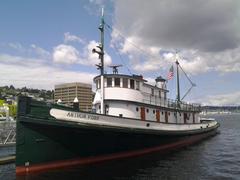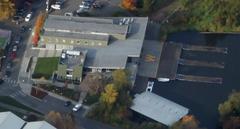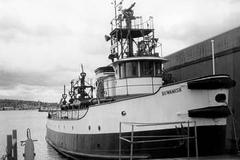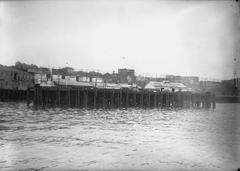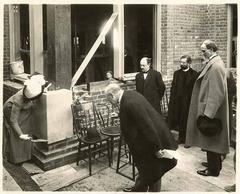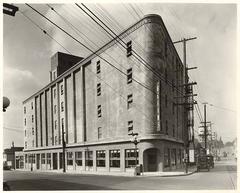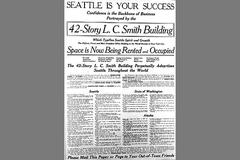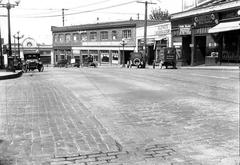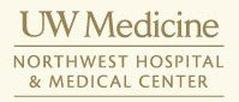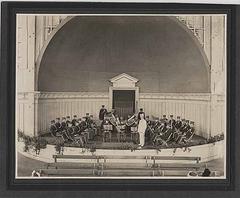1000 Second Avenue Seattle: Visiting Hours, Tickets, and Historical Sites Guide
Date: 04/07/2025
Introduction: The Significance of 1000 Second Avenue
Located in the heart of downtown Seattle, 1000 Second Avenue is a prominent office skyscraper that illustrates the city’s architectural evolution and urban vitality. Constructed in the 1980s, the building stands as a testament to Seattle’s transformation from its indigenous Coast Salish roots to a thriving Pacific Northwest metropolis. Its contemporary design—thanks to the vision of architects such as Donald Winkelmann and the expertise of firms like NBBJ and KPFF Consulting Engineers—reflects the era’s embrace of all-steel structures, functional aesthetics, and integration with the city’s streetscape (Skyscraper Center, PCAD, Wikipedia).
While primarily serving as an office building, 1000 Second Avenue welcomes visitors to its accessible ground-level plaza and lobby during business hours. Its central location places it near iconic Seattle destinations, including the Seattle Central Library, Pike Place Market, and the Seattle Art Museum, making it an ideal starting point for exploring the city’s rich historical and cultural landscape (Visit Seattle, Seattle Times).
This comprehensive guide details 1000 Second Avenue’s architectural features, visiting hours, accessibility, nearby attractions, and cultural relevance—equipping visitors to fully appreciate this downtown landmark.
Table of Contents
- Early Context and Urban Development
- Architectural Background and Construction
- Economic and Urban Impact
- Cultural Significance and Events
- Architectural Features and Visitor Experience
- Integration into the Urban Fabric
- Nearby Attractions and Things to Do
- Visuals and Media Suggestions
- Frequently Asked Questions
- Conclusion
Early Context and Urban Development
The area now occupied by 1000 Second Avenue has a deep-rooted history. Originally inhabited by the Coast Salish peoples, it later became a focal point for settlement and commerce during Seattle’s rapid expansion in the late 19th and early 20th centuries. Events such as the Klondike Gold Rush and the Great Seattle Fire of 1889 profoundly shaped downtown’s character, prompting a move toward more fire-resistant construction (Wikipedia: History of Seattle).
Architectural Background and Construction
Completed in 1986, 1000 Second Avenue rises 150.3 meters (493 feet) and comprises 40 floors above ground. Its all-steel construction was engineered by KPFF Consulting Engineers, while its modernist design—with sleek lines and a prominent glass façade—was led by NBBJ and Donald Winkelmann (Skyscraper Center). The building’s curved northwest corner and stacked southern terraces create a distinct profile and foster public engagement at street level (PCAD, Wikipedia).
Economic and Urban Impact
The 1980s marked a period of significant high-rise construction in Seattle, and 1000 Second Avenue played a prominent role in this transformation. Its desirable downtown address attracted a range of tenants, including professional service firms and government offices, contributing to the economic vibrancy of the area (Seattle Times). Its proximity to other civic and cultural institutions further cements its role as a hub for Seattle’s professional community.
Cultural Significance and Events
Although not tied to a single defining historical event, 1000 Second Avenue is woven into the ongoing story of Seattle’s downtown revitalization. The building has served as a backdrop for citywide celebrations, festivals, and events. Notably, it hosts the annual rappelling fundraiser for the Washington Special Olympics, drawing participants and spectators each year (Wikipedia).
Architectural Features and Visitor Experience
Visiting Hours and Accessibility
- Lobby and Plaza Access: Open Monday through Friday, 8:00 AM to 6:00 PM; closed weekends and major holidays.
- Public Access: Visitors may enter the lobby and street-level plaza; upper floors are restricted to tenants and guests with appointments.
- No Tickets Required: The building is a commercial office tower with no observation deck or public tours.
- ADA Accessibility: Fully accessible with ramps, elevators, and restrooms for visitors with disabilities.
Photography and Travel Tips
- Photography: Permitted in public areas; the reflective glass façade and unique building angles make for excellent urban shots.
- Getting There: Easily reached by public transit (University Street light rail, multiple Metro bus lines). Parking is limited—public transit or rideshare is advised.
- Nearby Amenities: While on-site dining is limited, the surrounding neighborhood offers a wide variety of restaurants and coffee shops.
Integration into the Urban Fabric
1000 Second Avenue exemplifies Seattle’s approach to blending modern high-rises with the city’s historical context. Its terraced plazas and human-scaled design encourage pedestrian activity and connect the office tower to the surrounding streetscape (Seattle Times). The site’s legacy includes innovative fire safety research, as the Seattle Fire Department used it for controlled safety tests before construction began (Kids Kiddle).
Nearby Attractions and Things to Do
1000 Second Avenue places you within walking distance of Seattle’s top destinations:
- Seattle Central Library: An architectural masterpiece by Rem Koolhaas.
- Pike Place Market: A bustling hub for food, crafts, and culture.
- Seattle Art Museum: Renowned for its diverse exhibitions (Attractions of America).
- Pioneer Square: Historic district with art galleries and the famous Underground Tour (Events12: Underground Tour).
- Benaroya Hall: Home to the Seattle Symphony.
The area is also known for its vibrant event calendar, including summer festivals, free concerts, and outdoor theater (Events12).
Visuals and Media Suggestions
- Exterior Shots: Highlight the building’s curved corner and glass façade (alt text: “1000 Second Avenue Seattle office tower with curved corner”).
- Lobby/Plaza: Photos of public art and street-level terraces (alt text: “Terraced public plaza at 1000 Second Avenue, Seattle”).
- Event Coverage: Images from the Special Olympics rappelling fundraiser.
- Maps: Interactive or static maps showing the building’s position relative to major downtown attractions.
Frequently Asked Questions
Q: Can I visit 1000 Second Avenue as a tourist?
A: Yes, you may enter the lobby and public plaza during business hours. There are no public tours or observation decks.
Q: What are the visiting hours?
A: Monday–Friday, 8:00 AM–6:00 PM. Closed on weekends and major holidays.
Q: Are tickets required to visit?
A: No tickets are needed; the building is a commercial office space.
Q: Is the building accessible for people with disabilities?
A: Yes, it is fully ADA compliant.
Q: What attractions are nearby?
A: Seattle Central Library, Pike Place Market, Seattle Art Museum, Pioneer Square, and Benaroya Hall are all within walking distance.
Q: Are there public events?
A: The annual Special Olympics rappelling fundraiser is a notable public event hosted at the building.
Conclusion
1000 Second Avenue represents Seattle’s ongoing story of resilience, innovation, and architectural ambition. As a distinctive office tower, it stands out for its curved design, modernist features, and role in the downtown business community. Its strategic location serves as a gateway to Seattle’s most treasured cultural, historical, and culinary attractions.
While not a traditional tourist site, the building’s accessible public spaces and proximity to major city landmarks make it a worthwhile stop for visitors exploring downtown Seattle. For a seamless visit, plan around business hours, use public transportation, and take advantage of nearby attractions and events.
To enrich your experience, download the Audiala app for up-to-date travel guides, event calendars, and local insights. Stay connected with us on social media for the latest Seattle visitor tips.
References and Further Reading
- 1000 Second Avenue, Skyscraper Center
- 1000 Second Avenue, PCAD
- 1000 Second Avenue, Wikipedia
- History of Seattle, Wikipedia
- Visit Seattle Events
- Seattle Times: Key Events that Transformed Seattle
- Martin Selig Real Estate: 1000 Second Avenue
- Attractions of America: Seattle Top Attractions
- Events12 Seattle July Events
- Downtown Seattle Economic Report
- Downtown Activation Plan, Mayor Harrell
